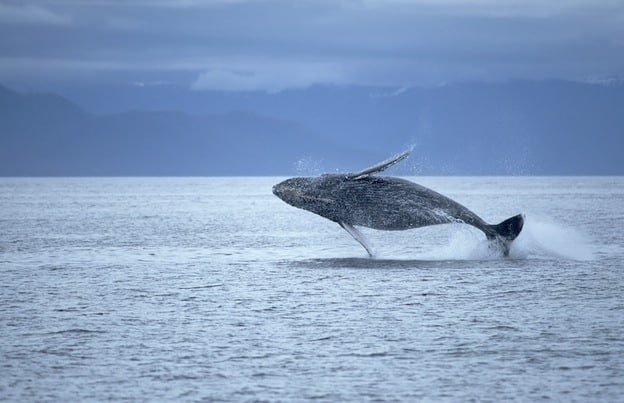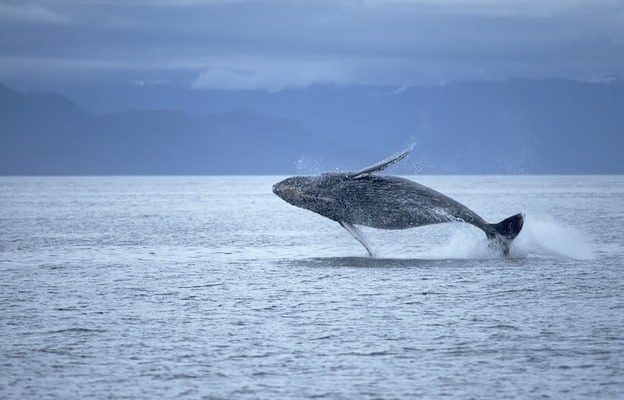
But where exactly can you find these magnificent beings? Blue whales primarily inhabit deep oceanic waters, favoring areas rich in krill, their main source of food. However, their existence isn’t limited to just the open ocean. They can also be spotted in coastal areas and sometimes venture into shallower waters during certain times of the year. Let’s dive deeper into the specific locations where blue whales thrive and what habitats they prefer.
Global Distribution of Blue Whales
Blue whales are spread across the world’s oceans, but their populations are not evenly distributed. You can mainly find them in the North Pacific and North Atlantic Oceans. In the Southern Hemisphere, they are usually seen around the coasts of Antarctica during feeding season.
Specifically, the North Pacific hosts a significant concentration of blue whales, particularly off the coasts of California and British Columbia. These waters provide rich feeding grounds, where krill flourish in nutrient-dense waters. The North Atlantic, on the other hand, sees these whales migrating along the eastern seaboard of the United States and Canada, with notable sightings off the coast of Iceland and Norway.
In the Southern Hemisphere, blue whales can often be found near the coasts of Chile and Argentina. During the summer months, they migrate to the nutrient-rich waters surrounding Antarctica to feast on massive swarms of krill.
Preferred Habitat of Blue Whales
Blue whales have a strong preference for deep waters. They thrive in oceanic environments rather than coastal regions. Their preferred habitats are typically found in areas that are around 200 to 1,500 meters deep. Why do they favor deeper waters? It all comes down to food availability. The deeper ocean layers provide plenty of krill, which congregates in these regions.
Interestingly, while they do spend most of their time in the open ocean, blue whales are also known to come closer to shore. Sometimes, you might spot them near coastal feeding areas, especially during migration. In these instances, they are often searching for nutrient-rich upwellings where krill is abundant.
You might be wondering how these habitats vary by region. In the North Pacific, for example, the blue whale’s feeding grounds are typically located near underwater canyons, where nutrient-rich waters rise to the surface. In stark contrast, in the Southern Hemisphere, they often rely on the productivity of cold, nutrient-dense waters around the Antarctic.
Seasonal Movements and Migration Patterns
Blue whales are known for their seasonal migrations, which are dictated by food availability and breeding cycles. During the summer months, these whales concentrate in nutrient-rich feeding grounds. They gorge themselves on krill, which helps them build up energy reserves for the upcoming migration.
As the seasons change and temperatures drop, blue whales migrate toward warmer waters for breeding. This movement is crucial for their survival. They often head to areas where waters are warmer and shallower, typically close to the coast. In the North Pacific, for instance, they might travel down to Mexico’s warm waters for mating.
Migration can cover thousands of miles. For example, a blue whale from the coast of California may travel all the way down to Baja California. This journey is not just for breeding; it’s also about survival, as warmer waters provide safer environments for mothers and calves.
Threats to Blue Whale Habitats
Sadly, the habitats of blue whales face several threats that impact their survival. One of the significant challenges is climate change. As ocean temperatures rise, krill populations may decline, forcing blue whales to search for food in locations farther away.
Another threat is ship strikes. As commercial shipping increases, the chances of these massive whales encountering vessels also rises. This is a dangerous situation—blue whales are huge, but they are not aware of oncoming ships. Research has shown that certain shipping lanes overlap significantly with blue whale migrations, posing deadly risks.
Additionally, ocean noise pollution can disrupt blue whales’ communication and feeding patterns. These whales rely on sound to communicate and locate food, and increased noise from boats and industrial activities can interfere with these critical behaviors.
Conservation Efforts for Blue Whale Habitats
Conserving blue whale habitats is essential for their survival, and various organizations are working tirelessly to protect these gentle giants. One approach is the establishment of marine protected areas (MPAs). These designated zones offer a haven for blue whales, allowing them to feed and breed without human interference.
Additionally, researchers are studying blue whale populations and migratory patterns to understand better how to protect them. By gathering data on their movements and habits, scientists can recommend policy changes, such as altering shipping routes or adjusting fishing regulations to minimize threats.
Public awareness campaigns play a crucial role as well. Educating people about the importance of blue whales and their habitats can inspire more individuals to support conservation efforts and advocate for cleaner oceans.
Understanding where blue whales are found is more than just an academic exercise—it’s a call to action. These magnificent creatures are vital to ocean ecosystems, and their survival depends on the health of their habitats. As we’ve seen, blue whales inhabit deep ocean waters and make seasonal migrations to find food and breeding grounds. But they face many threats, and their populations are still recovering from past whaling practices.
What can we, as individuals, do to help? We can support conservation efforts, reduce our carbon footprint, and advocate for sustainable practices that protect marine life. Keeping our oceans clean and safe is not just a responsibility; it’s a privilege. By doing our part, we can ensure that future generations will still hear the magnificent songs of blue whales echoing through the deep blue sea.

